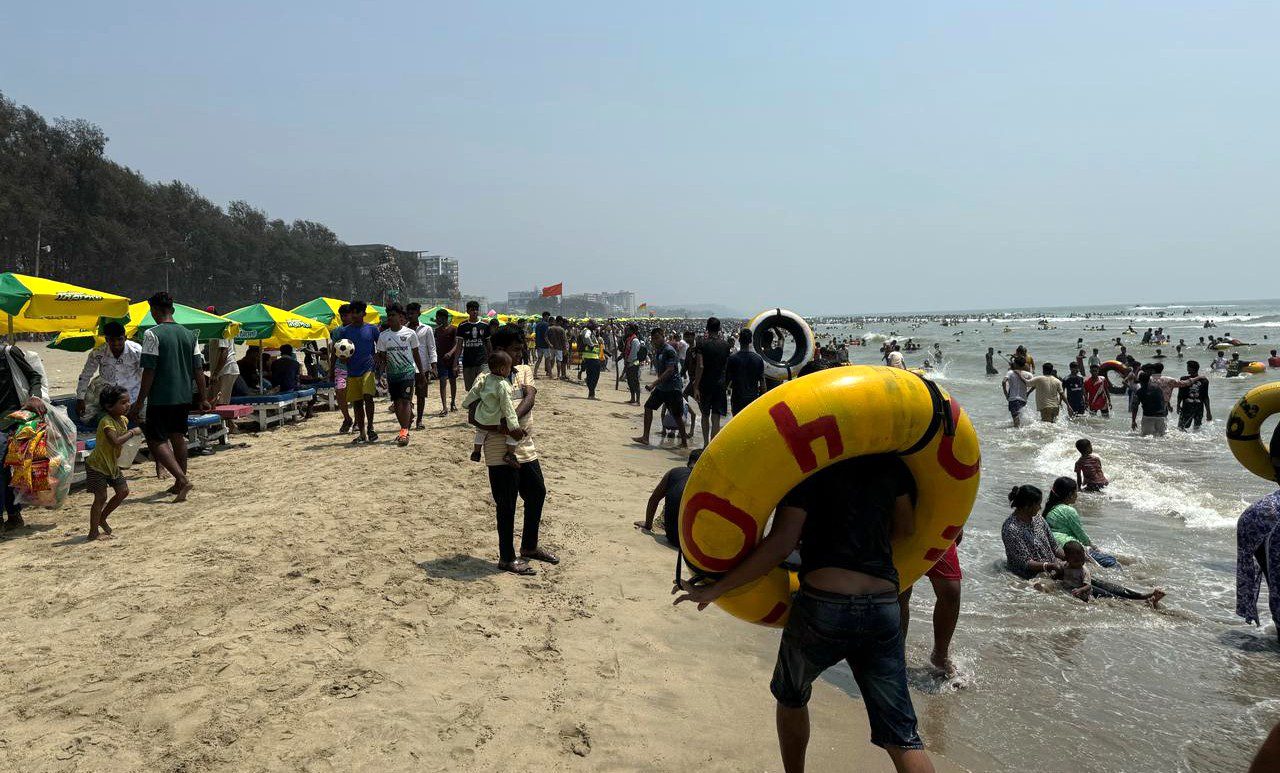As Bangladesh embarked on an unusually long nine-day holiday for Eid-al-Fitr, the country’s southern tourist hub, Cox’s Bazar, saw an unprecedented influx of visitors.
Home to the world’s longest unbroken natural sea beach, the town experienced overbooked hotels, gridlocked roads, and overwhelmed local authorities. Residents claim this year’s crowds have shattered previous records.
But this isn’t an anomaly — it’s a pattern.
Every year, during major national holidays, Cox’s Bazar transforms into a spectacle of mass tourism, drawing millions of domestic travelers.
Many, coming from major cities like Dhaka and Chattogram, seek a quick seaside escape, making the town of just over 200,000 people swell under the weight of demand for accommodation, food, and transport.
For many Bangladeshis, Cox’s Bazar is more than just a vacation spot.
“It’s a symbol of freedom,” says Shahana Rahman, a schoolteacher from Dhaka.
“It’s affordable, accessible, and familiar. No passports, no visas, no heavy planning — just hop on a bus and you’re there.”
Indeed, affordability plays a crucial role. Compared to international trips or even other domestic destinations, Cox’s Bazar remains budget-friendly for families, students, and middle-income travelers.
With dozens of direct bus routes from major cities and a growing number of low-cost hotels and eateries, the beach town continues to attract crowds year after year.
“There’s a psychological attachment to this place,” says Noor E Shahriar Sifat, a Dhaka-based entrepreneur. “In a dense, congested country, the vastness of the beach represents rare openness. It’s part of our national identity.”
But the surge brings its own challenges.
During peak holiday periods, mobile networks often collapse under heavy usage. Traffic jams last for hours. Piles of garbage accumulate along the shore. Despite efforts by municipal authorities and volunteers, the town’s infrastructure—designed for far fewer people — struggles to cope with.
“We’re grateful for the tourists, but we’re exhausted,” says Mahmud Alam, who runs a small beachfront guesthouse. “Water runs short, and our staff work non-stop.”
Authorities acknowledge the growing strain.
“Tourism is a blessing, but it also comes with burdens,” said an officer from Cox’s Bazar municipality.
“We are working on expanding roads, improving waste management, and enhancing security. But without long-term planning and national support, sustaining this growth is difficult,” he says.
While Cox’s Bazar thrives, other picturesque regions of Bangladesh remain largely overlooked — such as the rolling hills of Bandarban, the lush tea gardens of Sylhet, and the river islands of Barisal.
Poor connectivity, lack of promotion, and safety concerns keep tourists away from these destinations.
“The government and private sector have heavily marketed Cox’s Bazar,” says Emdad Hossain, a Dhaka-based tour operator. “But many other areas lack even basic infrastructure—roads, hotels, mobile coverage—to support mass tourism.”
In some cases, regional tensions and military restrictions further limit access. The Chittagong Hill Tracts, for example, remain sensitive due to ethnic tensions.
With domestic tourism booming, experts argue that Bangladesh must diversify its travel offerings—not just for economic growth, but for sustainability.
“Putting all our eggs in the Cox’s Bazar basket is risky,” warns Sifat. “We need to invest in other regions, train local guides, protect cultural heritage, and build eco-friendly infrastructure.”
There are also growing concerns about the environmental toll on Cox’s Bazar. Unregulated development has led to coastal erosion, pollution, and harm to marine life. Conservationists warn that without stricter protections, the beach could lose the very qualities that made it a tourism magnet in the first place.
Back on the crowded sands, families lounge under umbrellas, vendors call out their wares, and the surf crashes as children play in the waves.
For now, Cox’s Bazar remains Bangladesh’s coastal jewel.
But as it glitters under the sun, a pressing question lingers: how long can it bear the weight of an entire nation’s wanderlust alone.


